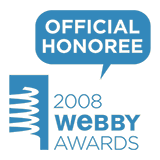Emdashes—Modern Times Between the Lines
The Basics:
About Emdashes | Email us
Ask the Librarians
Best of Emdashes: Hit Parade
A Web Comic: The Wavy Rule
Features & Columns:
Headline Shooter
On the Spot
Looked Into
Sempé Fi: Cover Art
Gratis Greens: The New Yorker's Guide to Foraging
Filed under: Looked Into Tagged: Adam Gopnik, food, Jonathan Taylor, Markets and Gardens, Sheila Hibben

Jonathan Taylor writes:
Heirloom food culture is converging with the New Thrift, even if many practices, like shopping farmer's markets and the home canning featured in the Times Wednesday, are most readily practiced by those with a surplus of time, if not money. The Wall Street Journal Wednesday charted a number of nutritious greens that were once commonly eaten but now proliferate, unnoticed and underfoot, in the guise of weeds. They're had at greenmarkets for greenbacks, but are ripe for wider rediscovery as an opportunity for frugal foraging.
As the Journal notes, plants like purslane and sorrel went by the wayside by the mid 20th century, as "immigrants and rural Americans moved to cities, leaving behind both their gardens and their ethnic origins." In 1943, during World War II days of rationing, The New Yorker's Sheila Hibben offered a timely reminder of "those perfectly edible greens which in happier times we called weeds." Hibben's "Markets and Menus" department was normally given over to the offerings of carriage-trade suppliers of glazed hams, cookies and wine.
- Milkweed: "as succulent and tender as any asparagus that has been made to grow by toil and patriotic enterprise" (Hibben raised the specter of the "shiftless country dweller" who might exploit "an untrimmed roadside" while "industrious Victory gardeners" labored away in their plots); to be harvested "just when the young shoots have pushed up to no more than six inches or so out of the ground."
- Home-cut fern tips: "likely to be a fresher and altogether pleasanter green than the vegetable which used to come to town all worn out by the long trip down from Maine"; "serving them provides a satisfying pride and comfortable sense of living off the land."
- Sorrel: "at this very minute is probably taking possession of your strawberry bed"; "Soft-cooked eggs or egg timables turned onto a bed of creamed sorrel provide as handsome a lunch dish as you could want of a hot day."
- Dandelion: "only the very young dandelion leaves are edible and they must be cut far enough below the ground so that they are partly etiolated." (???)
- Pokeweed shoots: "a slight, rather pleasant taste of iron"; "should be washed and carefully scraped and left in cold water for an hour"; "you had better look out" for poison in older plants. (The Journal says, "Eat with caution if at all," cooking in at least two changes of boiling water.)
- Wild mustard: "more generally accepted socially," and good boiled with bacon. ("If bacon makes too great a strain on the ration book, you'll find that bacon rind, which has only a one-point value, adds the same rich flavor.")
- Purslane: known as "pussley" by American farmers, and good "just to eke out a dish of boiled spinach."
But note to New Yorkers: foraging in city parks is illegal without a permit, but there are sanctioned foraging tours by "Wildman" Steve Brill (Adam Gopnik went on one in 2007.)




Comments
Timely, Jonathan. Just goes to show how there’s nothing new under the sun …